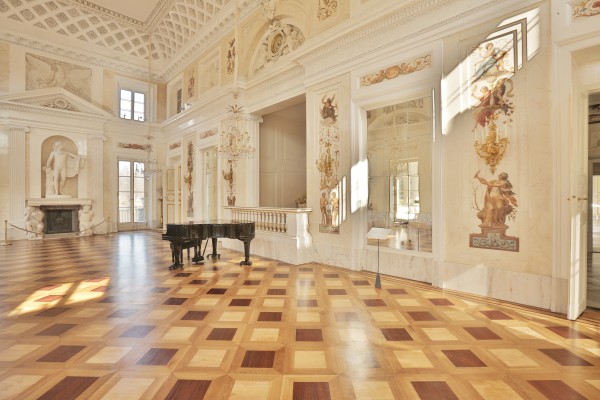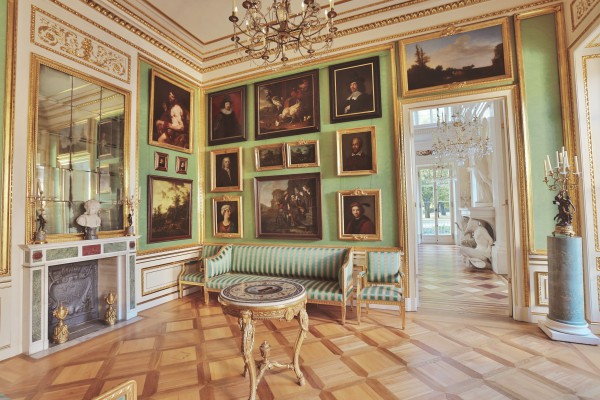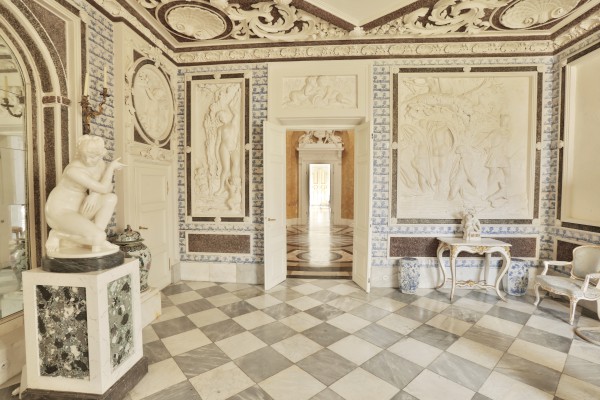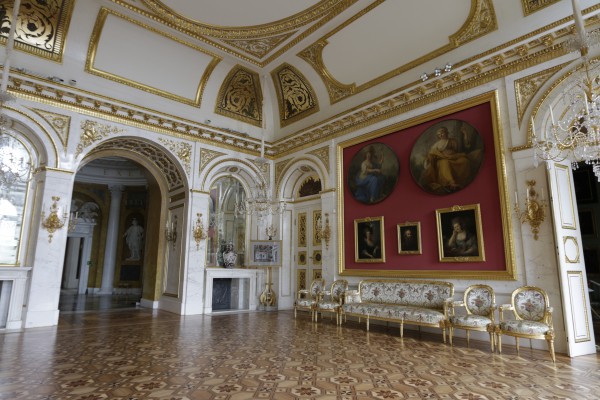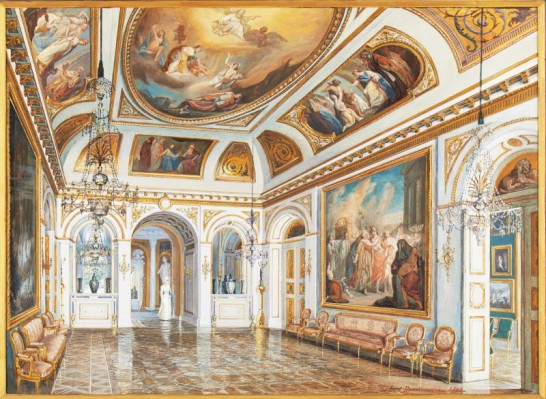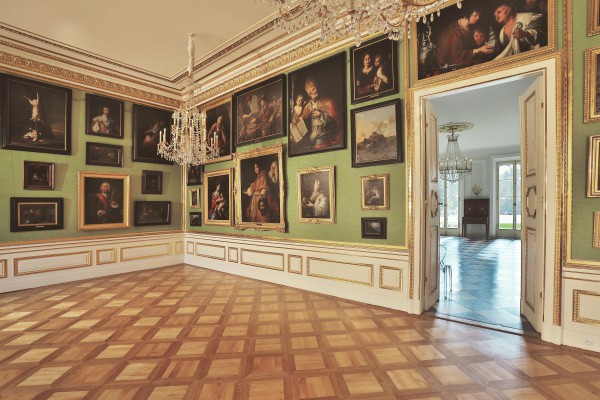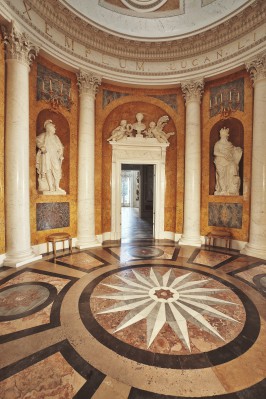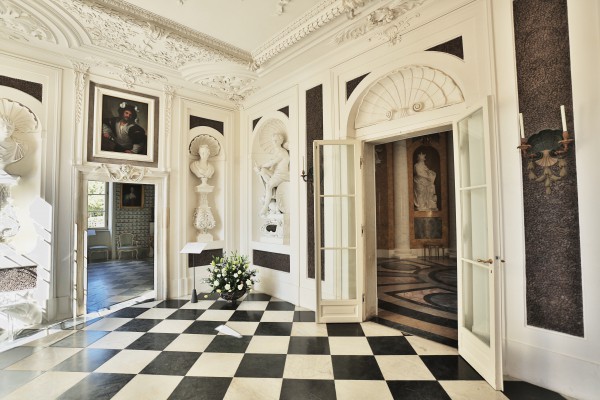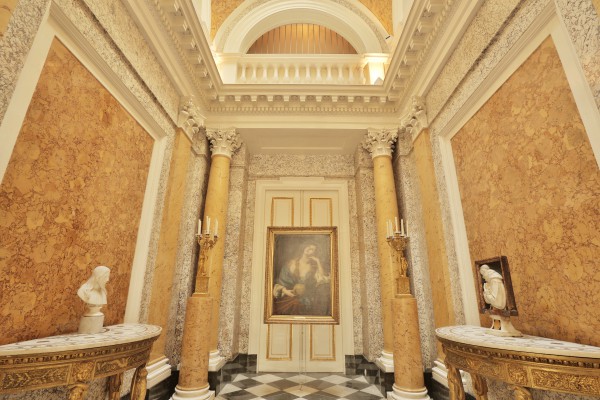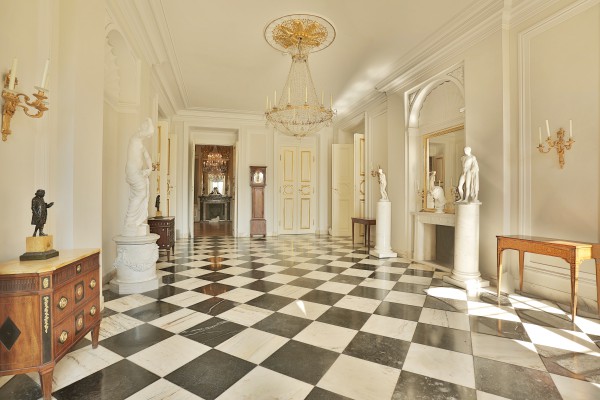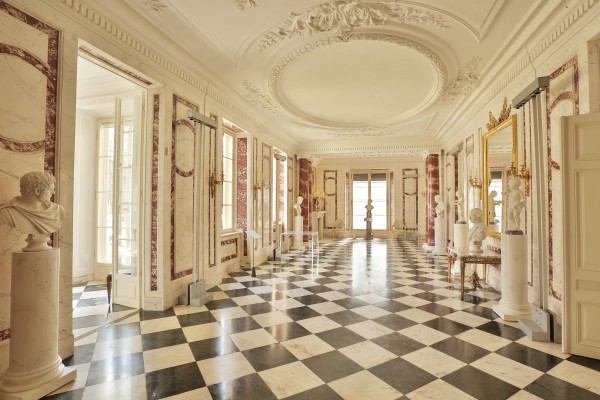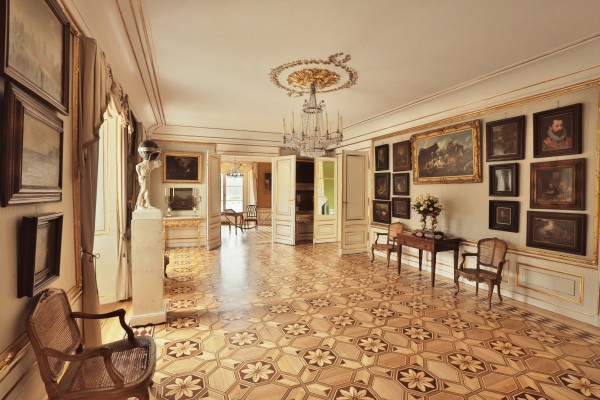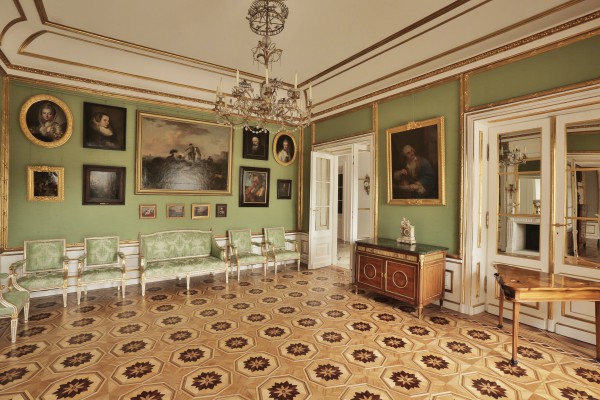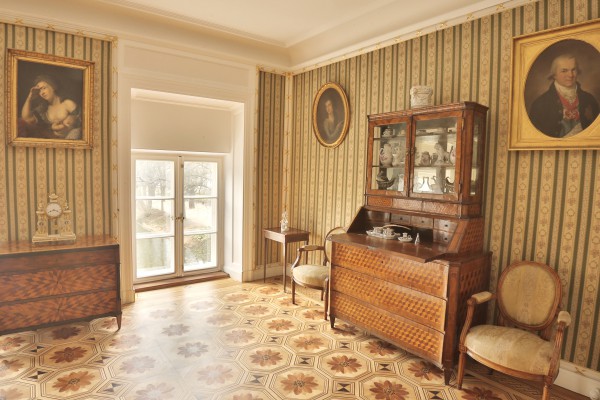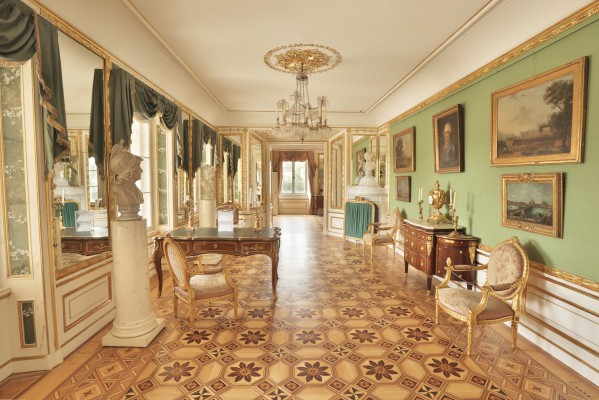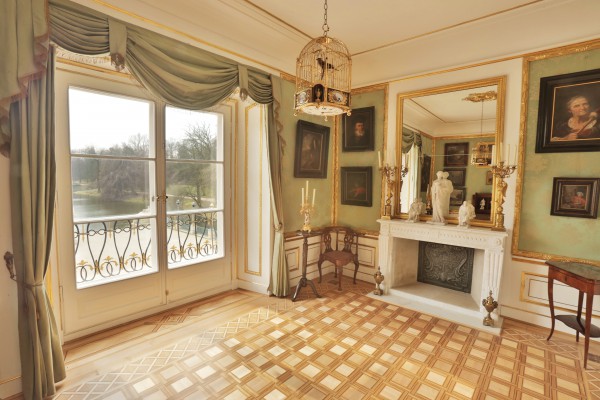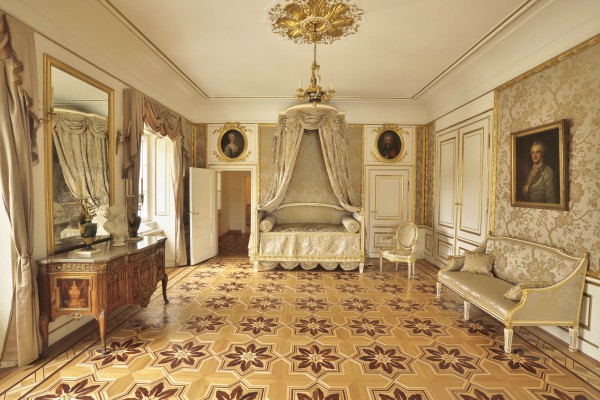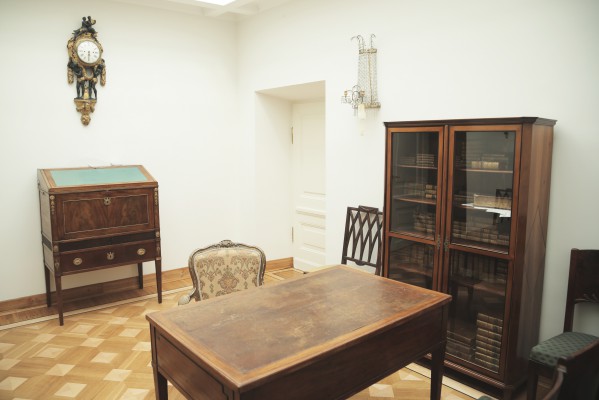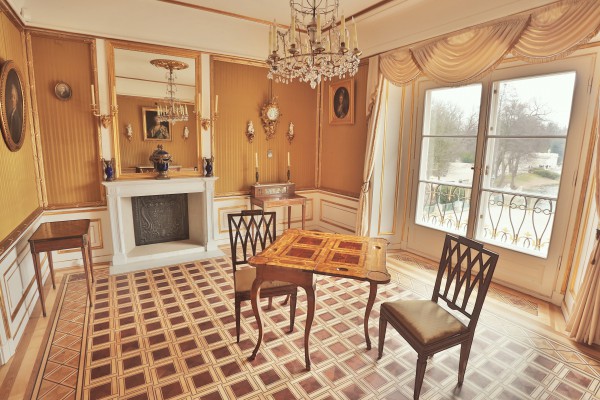
The Rooms of Franciszek Ryx
In the northern passage, on the first floor, above the Painting Gallery, the apartment of Franciszek Ryx was located. Franciszek Ryx was the Royal butler and a trusted acquaintance of Stanisław August. He came from Flanders. In 1766, he was granted the right to manage Warsaw theatres including the theatres owned by Stanisław August. In 1768, he was elevated into Polish nobility. Ryx’s apartment was created during the expansion of the Palace in 1788. Ryx’s living premises consisted of three small enfiladed rooms connected with entrances, and situated on a single axis. The central room was the narrowest, and functioned as a hallway leading to the apartments proper. Those include low-set windows on the internal side, as the architect aimed to maintain proper proportions in the north elevation.
The interior’s design is similar in all the three rooms. Their walls are lined with patterned, silk fabrics. Their current equipment consists of 18th century objects originating from other palaces and courts. The first of the apartments – the study – houses a collection of furniture from c. 1780. There, one can find a dresser from Kolbuszowa, an inlaid table, a Polish desk and chairs manufactured according to English patterns. The steel swivel clock made in Warsaw in 1825 is an interesting device.
The Hallway houses furniture from the late 18th and early 19th century. The chairs are bound with Polish leather. Portraits hanging on the wall depict King’s brother, Kazimierz Poniatowski, and his protégée, actress Agnieszka Truskolaska – a famous beauty of the period. Both portraits have been painted by Marcello Bacciarelli.
Ryx’s second apartment is the bedroom whose windows open on to the North Pond. In this interior, originally, a masonry heater stood in the place of the fireplace. In the times of the butler, more pieces of equipment could be found in this room. The original furniture included: a canopy bed, a dressing table, and a wardrobe for trousers. Today, it houses a commode inlaid with geometric shapes and a “Prussian” cupboard – decorated with whimsical hexagons. At present, it is used to display Saxon, Chinese, English, and Polish porcelain. On the walls hang portraits of persons from Stanisław August’s entourage: Portrait of Countess Tomatis by Kazimierz Wojniakowski, student of Marcello Bacciarelli, Portrait of Bazyli Walicki, Portrait of Countess Ponińska, and Portrait of Andrzej Roztworowski – all painted by unidentified Polish painters. On the central wall between the windows is a painting by Franciszek Ksawery Lampi, son of Giovanni Battista, Portrait of the Artist’s Wife with Child.
